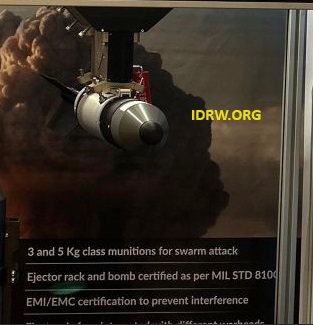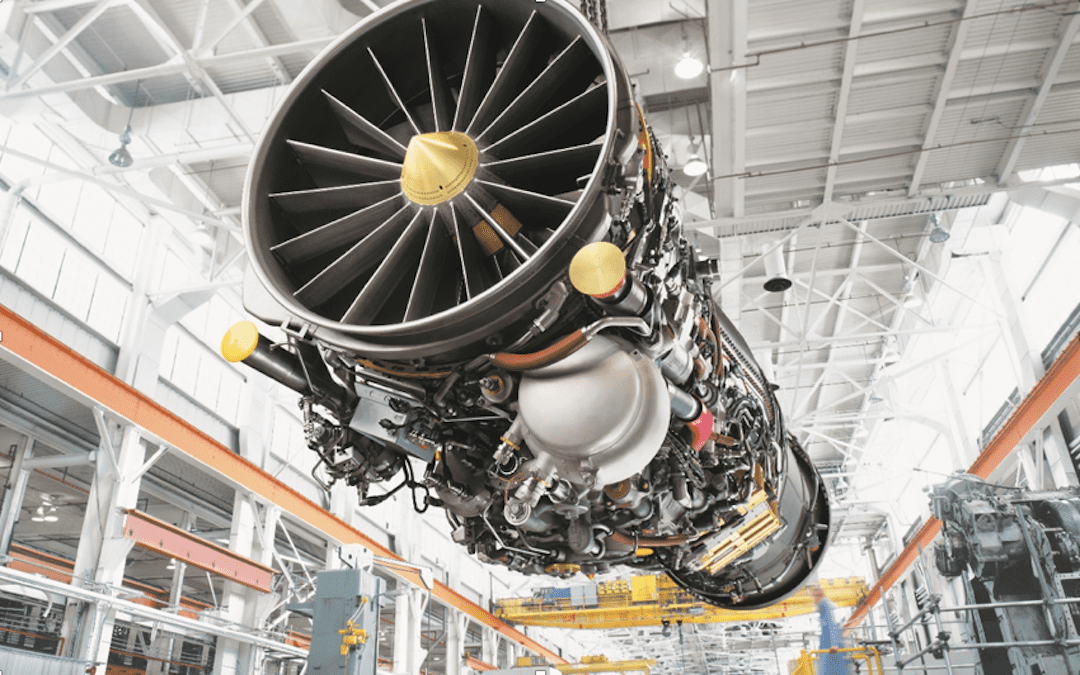Monthly Archives: August 2024
SOURCE: IDRW.ORG TEAM

ideaForge Technology Limited, a leading Indian drone manufacturer, has achieved a major milestone with the Directorate General of Civil Aviation (DGCA) granting type certification to its latest unmanned aerial vehicle (UAV), the Q6 V2. This certification validates the Q6 V2’s compliance with stringent safety and quality standards, solidifying ideaForge’s position as a prominent player in the drone industry.
The Q6 V2 builds upon the success of its predecessor, the Q6 drone, which has gained recognition for its exceptional performance and versatility across various sectors, including defense, civil, and enterprise applications. The new model incorporates advanced features and enhancements, further expanding its capabilities.
Continue readingSOURCE: RAUNAK KUNDE / NEWS BEAT / IDRW.ORG

In a significant development aimed at bolstering India’s submarine prowess, the Defence Research and Development Organisation (DRDO) and the Mazagon Dock Shipbuilders Limited (MDL) are set to engage in a competitive design race for the Indian Navy’s upcoming Project-76. This ambitious project envisions the procurement of 12 next-generation submarines in two phases of six each.
DRDO has received the green light to collaborate with the Indian Navy’s Warship Design Bureau (WDB) to develop a new indigenous conventional submarine design. Drawing inspiration from the successfully concluded SSN nuclear attack submarine’s design phase, DRDO’s design is expected to incorporate cutting-edge technology and advanced capabilities.
Continue readingSOURCE: RAUNAK KUNDE / NEWS BEAT / IDRW.ORG

Aeronautical Development Establishment (ADE) is actively exploring the possibility of offering its Archer Short Range Unmanned Aerial Vehicle (SRUAV) to fulfil the Indian Navy’s requirement for a Naval Aerial Robotic System (NARS). The NARS program seeks a modular UAV capable of operating from aircraft carriers, and the Indian Navy has tentatively expressed a need for 10 such systems.
The Archer SRUAV, renowned for its versatility and endurance, is being considered as a potential candidate. However, to adapt to the demanding career environment, significant modifications would be necessary. These include incorporating folding wings to optimize deck space and reinforcing the undercarriage to withstand the rigors of carrier landings.
Continue readingSOURCE: RAUNAK KUNDE / NEWS BEAT / IDRW.ORG

In a bid to bolster its fighter jet fleet amidst ongoing shortages, the Indian Air Force (IAF) has decided to extend the service life of its MiG-29UPG fighter jets. The service branch plans to implement a second life extension program to increase the operational lifespan of these aircraft from 40 to 50 years.
Originally slated for retirement in 2027, the MiG-29UPG fleet will now remain in service until 2035. This decision comes in response to the IAF’s pressing need for fighter aircraft, as the induction of the Tejas MkII, its intended replacement, is facing delays.
Continue readingSOURCE: IDRW.ORG TEAM

The Medium Machine Gun (MMG) MAG, manufactured by Small Arms Factory (SAF), a unit of Ordnance Factory Organization, Kanpur, is set to make its mark in the European market. Several European companies have expressed strong interest in acquiring these high-performance weapons.
The MAG gun, designed to serve as a medium machine gun, is known for its reliability and effectiveness. It is a fully automatic, air-cooled, belt-fed, gas-operated weapon capable of delivering sustained high rates of fire in bursts. The gun features an open breech design, preventing the risk of cartridge explosions (cook-offs) even after prolonged firing.
Continue readingSOURCE: IDRW.ORG TEAM

De Havilland Canada, a leading global aerospace company, is exploring the possibility of establishing a supplier base in India to support its aircraft platforms. The manufacturer of the iconic Twin Otter aircraft, which holds over 95% of the global seaplane market share, sees India as a significant growth market.
With more than 100 Twin Otter aircraft already deployed in the neighboring Maldives, De Havilland Canada anticipates significant growth potential in India. The company predicts the creation of 60-100 seaplane routes in the country over the next five years, requiring the development of approximately 30 aerodromes.
Continue readingSOURCE: RAUNAK KUNDE / NEWS BEAT / IDRW.ORG
The Indian Navy’s quest for enhanced underwater capabilities is taking a significant leap forward with the upcoming construction of two nuclear-attack submarines (SSNs). As the government prepares to greenlight the project, a crucial detail has emerged – the inclusion of pump-jet propulsion technology.
Pump-jet propulsion offers a significant advantage over traditional propellers. It reduces noise signature, making the submarines harder to detect by enemy sonar. Additionally, pump jets offer improved efficiency and manoeuvrability, making them ideal for navigating challenging underwater environments.
Continue readingSOURCE: RAUNAK KUNDE / NEWS BEAT / IDRW.ORG

The Gas Turbine Research Establishment (GTRE), a premier research and development organization under the Defence Research and Development Organisation (DRDO), has submitted a proposal to the Ministry of Defence (MoD) seeking dedicated funds for the establishment of a high-altitude test facility within the country.
Currently, India lacks such a crucial infrastructure, forcing GTRE to rely on the Central Institute of Aviation Motors (CIAM) in Russia for testing its critical engines, such as the Kaveri. This dependence on foreign facilities has several drawbacks.
Continue readingSOURCE: RAUNAK KUNDE / NEWS BEAT / IDRW.ORG

Indian defence startup, Zeus Numerix, has made significant strides in drone technology by developing 3kg and 5kg ammunition specifically designed for swarm drone operations. The company claims that these payloads can be integrated into a variety of drones, including those used for agricultural purposes, transforming them into potent weapons platforms when required.
A key component of this development is the company’s Ejector Rack Mechanism (ERM). Zeus Numerix has introduced three variants: ER8 Agnibaahu, capable of carrying one 3kg ammunition; ER25 Agnibaahu, designed to carry one 5kg ammunition; and ER55 Agnibaahu, which can carry two 3kg and one 5kg ammunition. Both the ERM and the ammunition have undergone rigorous testing and have been certified as per MIL-STD 800, a stringent military standard for equipment.
Continue readingSOURCE: IDRW.ORG TEAM

In a significant diplomatic move, Ukraine’s President Volodymyr Zelenskyy has proposed cooperation with India on the development and co-production of advanced defense technologies, including drones and electronic warfare systems. During a recent discussion with India’s Prime Minister Narendra Modi, President Zelenskyy expressed Ukraine’s readiness to collaborate closely with India in these critical areas, which are crucial for both nations’ defense capabilities and technological advancement.
President Zelenskyy emphasized Ukraine’s willingness to share its expertise and technological advancements in defense, particularly in the fields of drones and electronic warfare systems. “We will be very ready to share with you these products, and we will be happy if it can be co-production,” Zelenskyy conveyed to Prime Minister Modi. He highlighted the importance of starting collaborative efforts immediately, noting that teams from both countries would begin to work on various aspects of this proposed partnership.
Continue readingSOURCE: IDRW.ORG TEAM

Prime Minister Narendra Modi made a historic arrival in Poland on Wednesday evening, becoming the first Indian Prime Minister to visit the European nation in 45 years. This landmark visit follows in the footsteps of former Prime Minister Morarji Desai, who last visited Poland in 1979. Modi’s visit comes at a critical time for Poland, a country that has significantly bolstered its defense capabilities amid the ongoing Russia-Ukraine conflict and rising regional tensions.
Poland has been proactive in enhancing its national security, placing a substantial purchase order worth nearly $24 billion for advanced weaponry. This move reflects Warsaw’s commitment to strengthening its defense capabilities in response to the escalating conflict in neighboring Ukraine and the broader regional security concerns, particularly with Belarus siding with Moscow.
Continue readingSOURCE: RAUNAK KUNDE / NEWS BEAT / IDRW.ORG

The race for India’s massive Multi-Role Fighter Aircraft (MRFA) tender is heating up, with the Pentagon making a strong push for Boeing’s F-15EX fighter jet. This comes as the US seeks to break into the Indian fighter jet market, which has remained largely elusive for American manufacturers for the past 70 years.
Pentagon officials are keenly aware of the IAF’s lukewarm reception to the F-21 fighter jet, seen as a minor upgrade of the F-16V. Additionally, the recent loss of the F-18 E/F jets in Indian Navy’s carrier-borne fighter jet contract to the French Rafale M dealt a blow to US aspirations. The MRFA program represents a crucial opportunity for the US to finally gain a foothold in the IAF’s fighter jet fleet.
Continue readingSOURCE: RAUNAK KUNDE / NEWS BEAT / IDRW.ORG

Saab India is aiming to leverage the Transfer of Technology (ToT) for local manufacturing of F-414 engines by Hindustan Aeronautics Limited (HAL) from GE Aerospace as a key advantage in its bid for the Indian Air Force’s (IAF) Medium Multi-Role Fighter Aircraft (MRFA) tender.
The strategic importance lies in the fact that the Gripen-E fighter jet, offered by Saab, also utilizes the same 4-GE-39E turbofan engine developed by General Electric. While HAL is aiming for an 80% ToT on the F-414 engines, primarily for the upcoming Tejas MkII fighter jets, Saab sees an opportunity here.
Continue readingSOURCE: RAUNAK KUNDE / NEWS BEAT / IDRW.ORG

India and the United States have taken significant strides in advancing priority co-production projects, including the crucial GE F-414 engine, which is set to power India’s next-generation Tejas Mk-2 aircraft. This collaboration marks a significant step in enhancing India’s defense capabilities while strengthening the strategic partnership between the two nations.
The US-based company GE Aerospace has provided its cost estimate for the co-production deal of the F-414 engines. Negotiations on the final pricing are expected to be completed soon, paving the way for Hindustan Aeronautics Limited (HAL) to locally manufacture the engines in India within the next three years. The co-production arrangement includes an impressive 80% Transfer of Technology (ToT), which will significantly boost India’s domestic manufacturing capabilities in the defense sector.
Continue readingSOURCE: IDRW.ORG TEAM

The Indian Navy has reportedly raised concerns over L&T Navantia’s bid for the prestigious Project-75I submarine program. The core issue revolves around the Air-Independent Propulsion (AIP) system, a critical technology for submarine endurance.
While L&T Navantia has touted its new Bio-Ethanol Stealth Technology (BEST) AIP system as a game-changer, the Indian Navy is insistent on a sea-worthy AIP system that is already integrated into a submarine. The Spanish company’s AIP trials were conducted on a land-based facility, a fact that has not impressed the naval brass.
Continue reading